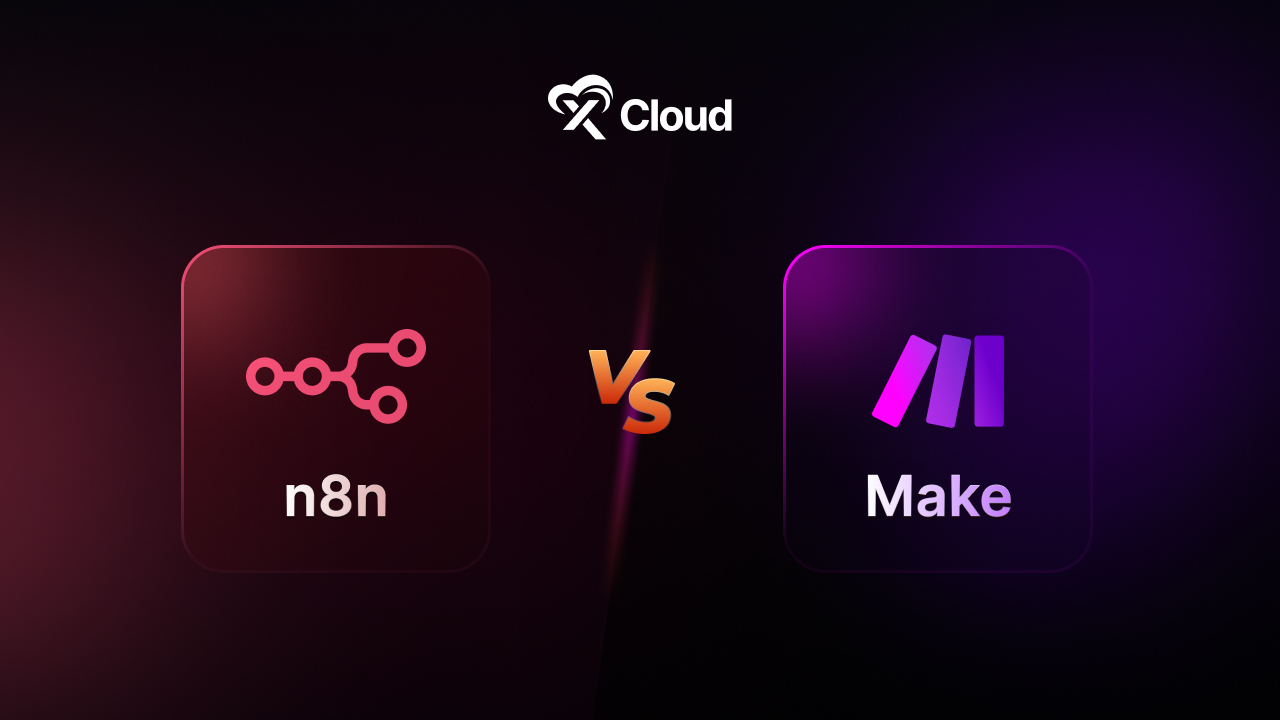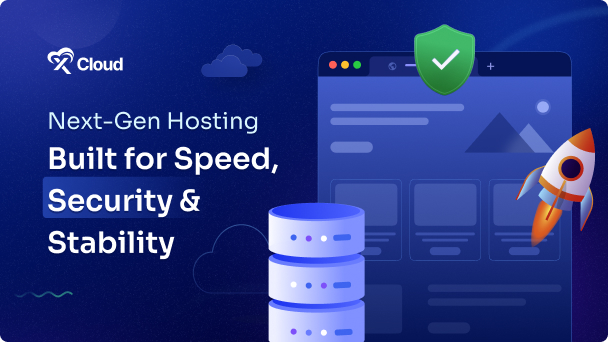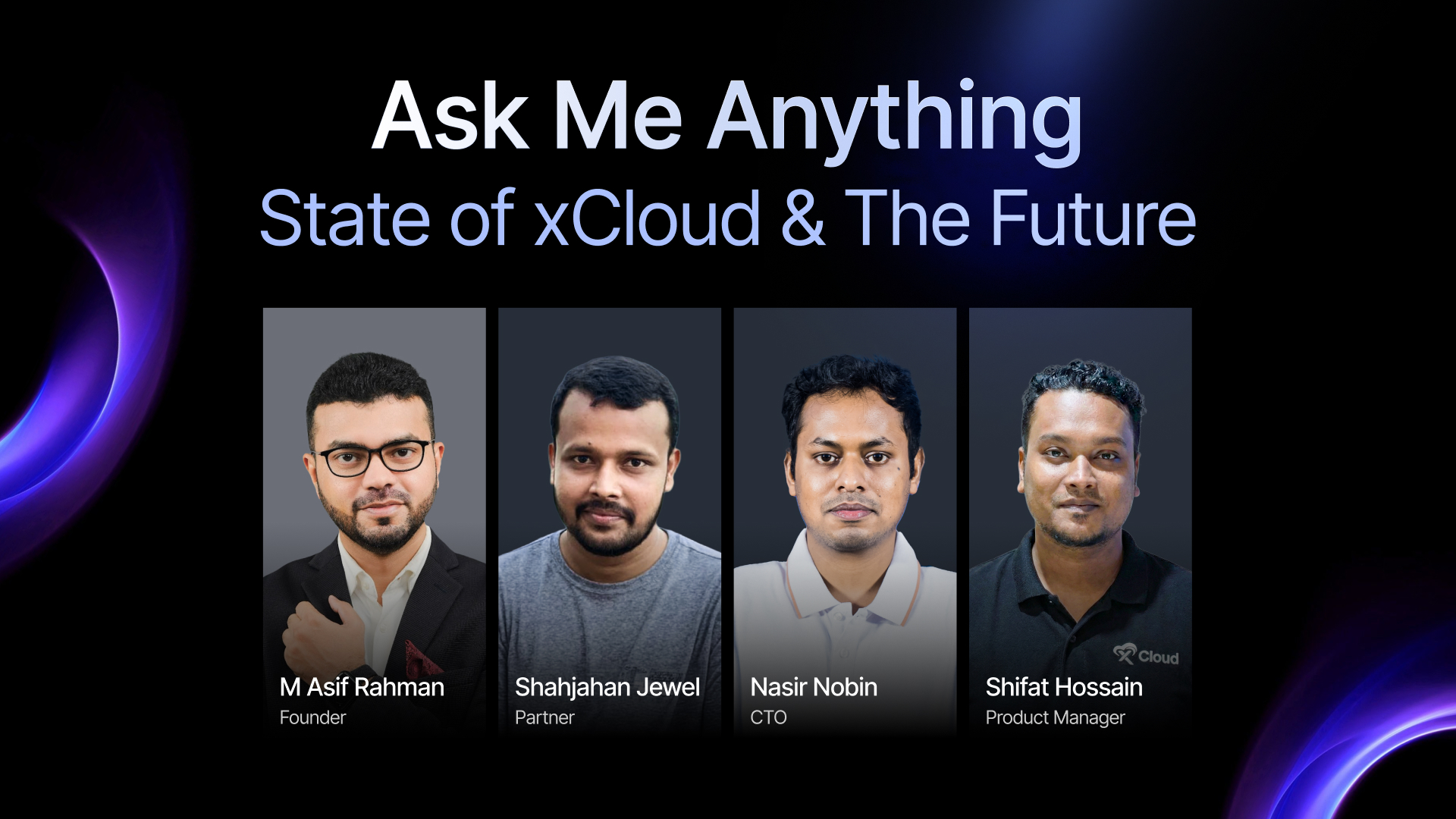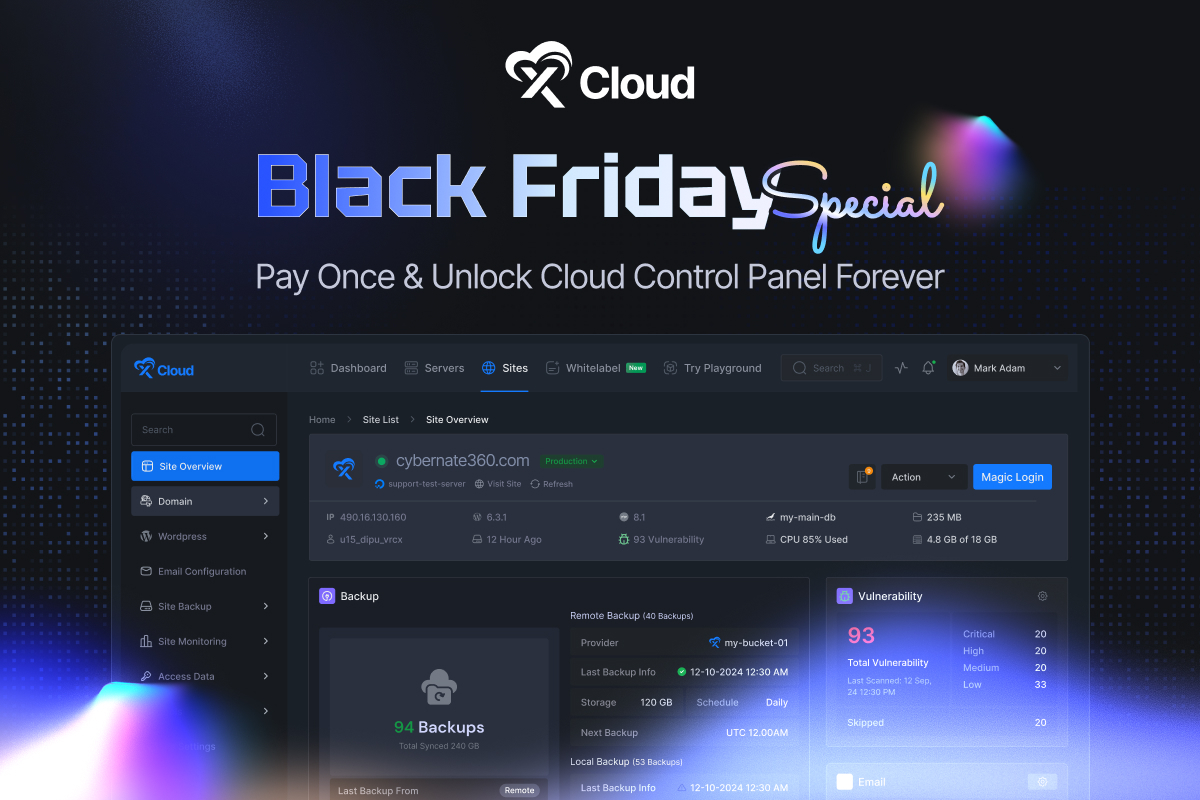Workflow automation has really changed over the years and by 2025, it is getting an an important for businesses. Tools like n8n, Make, and Zapier have become popular for helping companies cut out repetitive tasks and improve efficiency.

Let us go into a detailed comparison between n8n vs Make, their pricing, features, and more to help you choose the right fit.
About n8n
n8n (which stands for “node automation”) is a powerful workflow automation tool that first came out in 2019. It is built with developers in mind. Unlike many no-code tools, n8n gives you both simplicity and flexibility. You can use a visual editor to build workflows, but you also have the option to write custom code in JavaScript or Python when needed.
One of the main things that makes n8n different is that you can self-host it. This means you can run it on your own servers or cloud infrastructure. You get full control over your data, security, and how the platform is customised. That is a big advantage for teams that deal with sensitive data or follow strict rules like GDPR, HIPAA, or SOC2.
n8n uses a node-based editor. Each node does a specific task. For example, you can pull data from an API, change the format of JSON, or trigger an action in another app. While it might take a bit more time to learn than other tools, it gives you a lot more power and flexibility if you are comfortable with code.
Key strengths of n8n
- Open-source core that you can self-host or run on n8n Cloud
- More than 400 built-in app integrations
- Custom code support using JavaScript and Python
- Workflow charges are based on how many times the workflow runs, not how many steps it has
- Built-in support for LangChain to power AI-driven workflows
n8n is a great fit for developers, data teams, and technical businesses. If you care about having full control over your automations and want something that can grow with your needs, n8n is worth a serious look.
About Make
Make started in 2016 as Integromat. In 2022, it rebranded to Make to show how much it had grown into a full, easy-to-use no-code automation platform.
Today, Make is a favorite for startups, marketing teams, and small to mid-sized businesses. It gives you a simple way to connect apps and automate everyday tasks. You do not need to write any code to use it.
Make is a cloud-based tool that focuses on ease and speed. It has a visual builder where you can drag and drop modules to create workflows. Each module does one thing, like sending an email, adding a row to a spreadsheet, or checking a condition. This design makes it easy to see how your data flows and how your logic works.
One of Make’s biggest strengths is its large number of integrations. It supports over 2,000 apps. You can connect tools like HubSpot, Salesforce, Slack, Microsoft Teams, and many more. It is simple to set up and start using across different parts of your business.
Key highlights of Make
- Visual builder with a clean and easy-to-use interface
- More than 2,000 app integrations, templates, and modules
- Built-in scheduling and logic tools
- Usage-based pricing based on how many operations you run
- Strong error handling with visual debugging tools
Make does not offer self-hosting or deep coding features. But it stands out for how accessible and fast it is. If you are a small team or a solo founder who wants to automate without a lot of technical setup, Make is a great choice. You can build and launch your workflows quickly and with less effort.
Core Feature Comparison Between n8n vs Make
While both platforms aim to simplify automation, the way they achieve this and what they prioritise differ significantly. Here is a closer look at their core features side by side:
Workflow Design Interface
Make gives you a visual canvas where you can drag and drop modules to build what it calls “scenarios.” Each module is a step in your workflow. This setup is simple and easy to understand, even if you are just getting started. The interface is colourful, user-friendly, and gives you real-time feedback as you build.
n8n takes a more technical approach with its node-based editor. Each node handles a specific action, and you can design complex flows with features like loops, branches, and conditional logic. It might take a bit more effort to learn, but it gives developers the freedom to build detailed, customised workflows.
Execution Model
One of the biggest differences between the two platforms is how they charge you. Make use of a per-operation pricing model. That means every single step or action in your scenario counts as one operation. The more steps you have, the more you pay.
n8n, on the other hand, charges per full workflow run. It does not matter how many steps are inside that workflow. This makes it a very cost-effective option if you are running complex workflows with lots of actions in a single execution.
Integrationx Libraries
Make gives you access to a huge library of over 2,000 native integrations. It covers a wide range of tools, including CRM systems, email marketing platforms, cloud storage, eCommerce apps, and more. You can connect to the most popular services right out of the box.
n8n supports over 400 native integrations. While that is fewer, it gives you more flexibility. You can connect to almost any API using the built-in HTTP Request node. You can also write custom code when needed. This makes n8n a great choice if you are working with unique, private, or in-house tools.
Scheduling And Trigger Options
Both Make and n8n let you start workflows using schedules, webhooks, or events from connected apps.
n8n takes it a step further. You can use multiple triggers in a single workflow, set up fallback options, and build conditional paths. This gives you more control, especially in complex use cases.
Make offers scheduled runs (as often as every 5 minutes, or every minute on higher plans) and real-time triggers. The interface makes it easy to manage your logic and keep your workflows organized.
In the end, n8n focuses on flexibility and technical depth. Make is all about ease of use and getting up and running quickly. The right choice depends on what matters most to you: more control or a simpler setup.
Ease of Onboarding
Make is built for non-technical users. Its visual builder is simple and intuitive, with a clean layout and modular design that makes it easy to follow. You do not need any coding experience to get started. With thousands of ready-to-use templates, you can launch automation scenarios quickly and with very little setup.
n8n is better suited for users who have a technical background. It also has a visual builder, but its node-based layout is built around concepts like APIs, data formatting, and logic flows. If you are comfortable with coding, n8n gives you a lot of control and flexibility. But if you are a beginner, you might find the learning curve a bit higher at first.
Customization And Scripting
This is where the two platforms really start to differ. n8n gives you advanced scripting options right inside your workflows. You can write custom JavaScript or Python, install external packages, and make complex API calls. This makes it a strong choice if you need highly customized business logic or work with unique data flows.
Make also allows some level of customization through module settings and filters. However, if you want to use custom JavaScript, that feature is only available on the higher-tier Enterprise plan.
Data Control And Hosting
When you are picking an automation platform, data privacy and security are key, especially if you work in fields like finance, healthcare, or government, where compliance rules are strict.
n8n gives you the option to self-host. You can run it on your own servers, in a private cloud, or with a provider you trust. This setup gives you full control over your data and helps you meet compliance requirements. If you would rather not handle the setup, you can choose n8n’s managed Cloud version.
Make, on the other hand, runs only on its own cloud infrastructure. This works well for small teams and marketing departments that want something quick and easy to use. It meets major standards like GDPR and SOC 2. However, since it is not open source and does not offer self-hosting, it may not be ideal for businesses with strict data control or compliance needs.
Pricing Breakdown
Understanding how each platform handles pricing is important if you want to make a smart, cost-effective choice. Both n8n and Make offer free plans and several paid options, but they bill users in very different ways.
n8n: Execution-Based Pricing
n8n uses a pricing model based on workflow executions. You have two main options:
- Self-hosted: Completely free to use. You manage the hosting and infrastructure yourself, but there are no license fees or usage limits.
- n8n Cloud: Starts at around $20 per month. This includes 2,500 executions. Each time a workflow runs, it counts as one execution—no matter how many steps are inside.
This model is ideal for complex workflows with lots of actions. Since you are only charged for complete runs, you are not penalized for having multi-step processes. It works well for use cases like order handling, lead qualification, or AI-powered automations that involve many steps.
Make: Operation-Based Pricing
Make uses a tiered pricing model based on the number of operations each month. Every step in a workflow (called a scenario) counts as one operation.
- Free Plan: Includes 1,000 operations per month with basic features.
- Paid Plans: Start at about $10 per month for 10,000 operations. Higher plans unlock features like faster run intervals, access to premium apps, and support for more users.
Make’s pricing is friendly for simple workflows and small teams. But costs can rise fast if you build workflows with many steps or run them often. For example, if you have a five-step scenario that runs 2,000 times, you will use 10,000 operations.
If you are running complex workflows with lots of steps, n8n’s per-execution model will likely save you money. But if your workflows are simple and run often, Make’s per-operation model might give you better value, especially at the lower tiers.
AI Integration & Automation
As AI becomes a bigger part of business workflows, automation platforms are adding more ways to support AI-powered tasks. Both n8n and Make offer AI integrations, but they take very different approaches.
n8n: Built for Custom AI Workflows
n8n stands out for its deep support of custom AI solutions. It has a native integration with LangChain, a powerful tool for working with large language models (LLMs). With it, you can build advanced AI workflows like:
- Context-aware chatbots
- Document summarization and data extraction
- Retrieval-Augmented Generation (RAG) systems
- AI agents that run inside your workflows
n8n also offers nearly 70 AI-focused nodes and supports both OpenAI and custom LLM endpoints. Combined with its scripting tools, you can create complex, dynamic workflows that work smoothly with AI. This makes n8n a great fit for developers who want to build tailored, advanced AI features.
Make: Simple AI for Everyday Use
Make takes a more user-friendly approach. It comes with pre-built integrations for popular AI services, including:
- OpenAI (ChatGPT and Whisper) for text and speech
- Google Cloud Vision for image analysis
- Eden AI and Eleven Labs for a wide range of AI tools
- AI Assistant to help set up workflows using natural language
These tools are great if you want to add AI features like content creation or image recognition without needing to code. While Make is less customizable than n8n, its simple design makes AI easy to use for non-developers.
If you need full control and want to build complex, custom AI workflows, n8n gives you that flexibility. If you want to quickly add AI features with minimal effort, Make is the easier path.
Fully Managed n8n Hosting with xCloud
If your team wants the power and flexibility of n8n but does not want to manage servers or infrastructure, xCloud offers a smart solution. It is a managed hosting provider that specialises in running and scaling self-hosted tools like n8n.
We provide a secure, high-performance environment designed specifically for automation workloads. You get the full benefits of n8n without the stress of setup, maintenance, or scaling.
Why Choose xCloud for n8n?
- Instant, self-managed n8n setup
- Environment editor access
- Timezone configuration support
- Deploy with a custom domain or demo URL.
- One-click version upgrades from the dashboard
Whether you are part of a startup or an enterprise, xCloud gives you a balanced solution. You get the customization and control of self-hosting with the ease and reliability of a managed service.
If you want to unlock everything n8n can do—without the operational burden—xCloud is the ideal middle ground.
Quick Glance: Which Platform Is Right for You?
The best platform for your team depends on a few key factors: your team’s skill level, how complex your automation needs are, how sensitive your data is, and your budget. Here are the main points to consider:
| Feature | n8n | Make |
| Platform Type | Low-code / Developer-focused | No-code / Visual-first |
| Hosting Options | Self-hosted & Cloud | Cloud Only |
| Open Source | Yes | No |
| User Interface | Node-based Visual Editor | Drag-and-Drop Scenario Builder |
| Target Audience | Developers, Tech Teams | SMBs, Marketers, Non-tech users |
| Number of Integrations | 400+ native, extensible via HTTP/API | 2,000+ native apps |
| Custom Code Support | Yes (JavaScript & Python) | Limited (Enterprise tier only) |
| AI Integration | Advanced (LangChain, OpenAI, RAG, etc.) | Basic (OpenAI, Vision AI, Assistant) |
| Pricing Model | Per Workflow Execution | Per Operation |
| Free Tier | Yes (Self-hosted is free) | Yes (1,000 operations/month) |
| Data Privacy & GDPR | Full control with self-hosting | Managed by Make, SOC2 & GDPR Compliant |
| Execution Trigger Flexibility | Supports multiple triggers & paths | Single trigger per scenario |
| Template Availability | 1,500+ Templates | 7,000+ Templates |
| Self-Hosting Capability | Yes | No |
| Best For | Complex workflows, compliance, high customization | Simple workflows, fast setup, non-developers |
So, Between n8n vs Make: Which One Wins?
Now that you have seen how n8n and Make compare, the decision comes down to your team’s needs and technical comfort. Choosing between n8n vs Make in 2025 comes down to one question: What do you need in terms of flexibility or simplicity?
Whichever you pick, both tools help you save time, reduce manual work, and bring more efficiency to your business workflows. Automation is no longer optional—it is your advantage. Make your choice wisely.
Frequently Asked Questions (FAQ)
Can you move from Make to n8n?
Yes, you can move from Make to n8n, but you will need to set it up manually. The two platforms have different ways of handling workflows, so there is no way to directly import your workflows. You will need to rebuild them in n8n, step by step. However, n8n’s HTTP Request and custom scripting tools can help you recreate nearly any scenario from Make.
Do I need to know coding to use these platforms?
Make is made for users who are not technical. You can create and run workflows without any coding. n8n takes a low-code approach and is best for developers or those familiar with APIs and scripting. While you do not have to code, having technical knowledge can help you access more advanced features.
Which platform is better for AI automation?
If you want to create complex AI workflows, n8n is the better choice. It supports LangChain, OpenAI, and various AI options with full scripting features. Make is good for simpler AI tasks but lacks the deep customisation that developers might need.
Can I use both platforms together?
Yes, you can. Some teams use Make for easier front-end automations and n8n for backend workflows that need more customisation, compliance, or scalability.
If you have found this blog helpful, feel free to subscribe to our blogs for valuable tutorials, guides, knowledge, and tips on web hosting and server management. You can also join our Facebook community to share insights and engage in discussions.







































